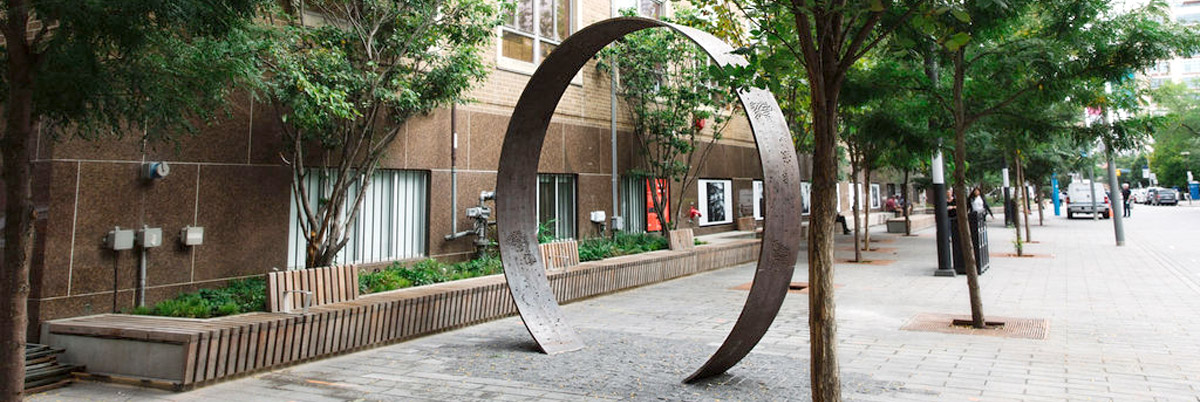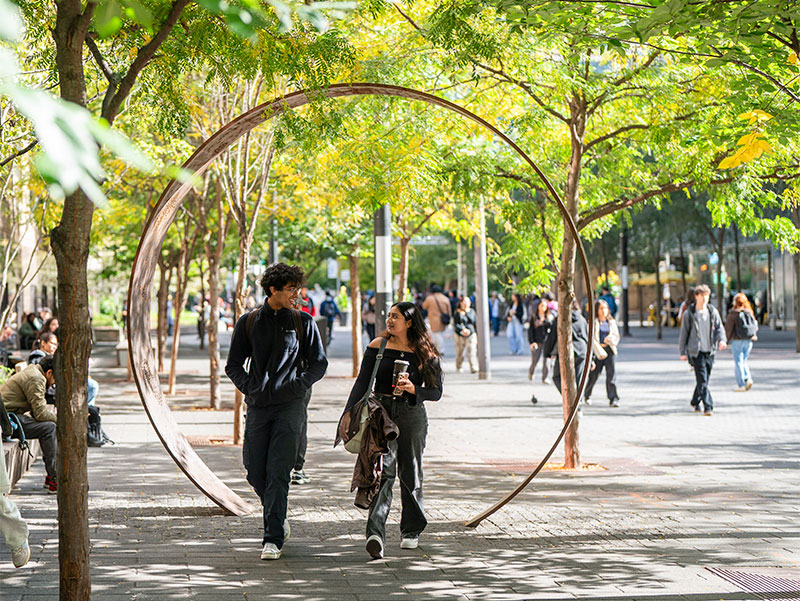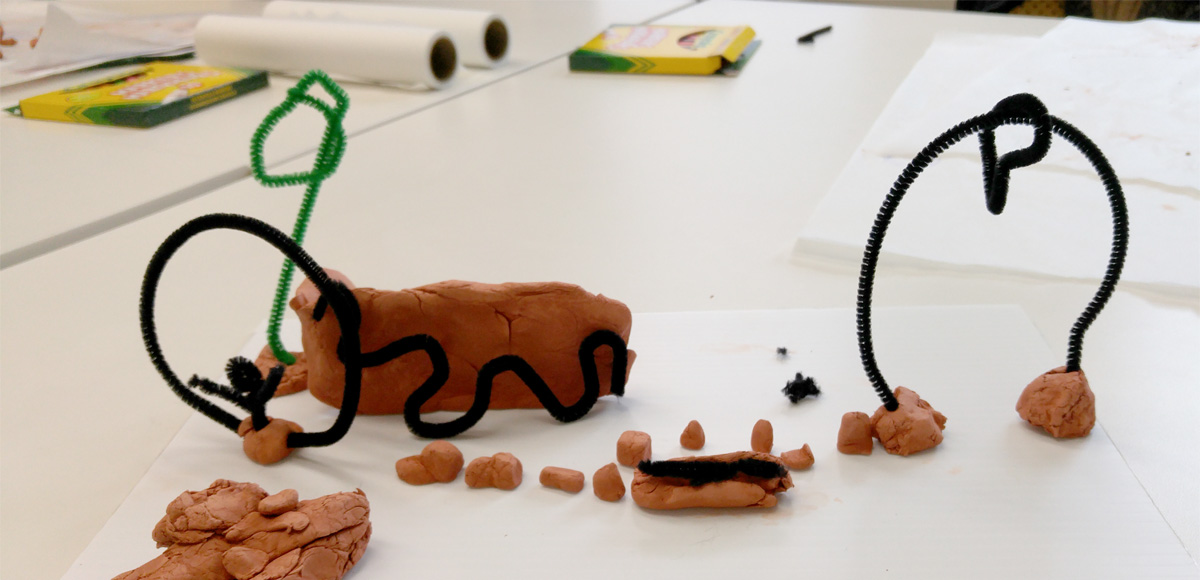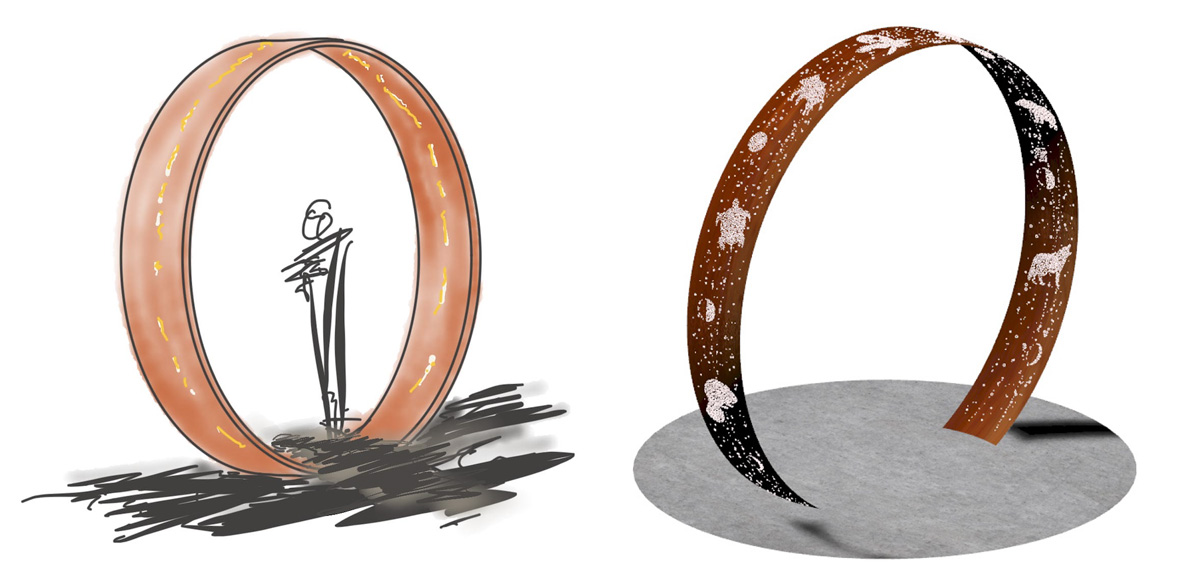Indigenous Placemaking

Indigenous Acknowledgement: “The Ring”
Toronto Metropolitan University is committed to actively fulfilling the recommendations identified by the 2018 Community Consultation Summary Report (formerly the Truth and Reconciliation at Ryerson University report). As part of this effort, the university community conceived a public art installation to acknowledge the Indigenous histories of the land where the institution now resides, recognize the truth of Indigenous narratives and celebrate the ongoing contributions of Indigenous cultures to the social fabric of our community.

The untitled sculpture, affectionately called “The Ring”, is a critical placemaking initiative that speaks to the changing context of our institutional identity and reflects our commitment to inclusivity, accessibility and a holistic vision of community.
Shaping our future with our goals of today
Started in 2019 and steered by Facilities Management and Development and the Indigenous Space Sub-Working Group, the project embodies the Campus Master Plan’s vision to build inclusive, vibrant spaces and an urban destination that fosters a welcoming and inspiring environment for our students, faculty, staff and the broader community.
Fully accessible to all members of the community, it is set at street level at the very heart of our revitalized campus core. All visitors on campus are able to stand within or pass through its arc, touch its surfaces and participate in the experience of its design.
Guiding the vision with community involvement
The project provided an irreplaceable opportunity for cross-cultural learning, sharing and consensus-building. The campus community worked collaboratively to guide the design process and select the prominent location on campus where students, faculty, staff, neighbours and tourists can be drawn into the experience of the Ring in our urban campus core.
The first stage toward realizing the Ring was the involvement of the university’s community in a series of consultation events, to determine how best to represent the histories and still vital cultures of this land, and to seek input about community expectations for the project.
Sharing Circles

In 2019, all members of the university’s community were invited to take part in a series of Sharing Circles and to offer their thoughts as online comments. These processes posed a series of key questions exploring foundational concepts and intentions, cultural acknowledgements, questions of representation, and potential forms and approaches.
Working design sessions

Following the Sharing Circles, the project team held workshops for participants to discuss some of the proposed options, share insights, and bring their recommendations to the larger group. The workshops included opportunities to work with campus maps and art media to create mock-ups for discussion and explore a diverse range of concepts, materials and forms.
Design development

Finally, design and realization of the Ring emerged through the collaborative deliberations of the designers, Two Row Architect, working alongside the university's Truth and Reconciliation Strategic Working Group, members of the university’s Indigenous community, and TMU’s Facilities Management and Development department.
Building on Indigenous design traditions
The sculpture was designed by Matthew Hickey and Jacqueline Daniel of Two Row Architect (external link) , an Indigenous-owned and operated firm located on the Six Nations of the Grand River reserve. The firm is focused on guiding the realignment of mainstream ways of thinking on their journey towards Indigenous ways of knowing, being, design and architecture.
The Ring’s graphics incorporate the animal symbols for the Seven Grandparent teachings, representing: Humility, Courage, Honesty, Wisdom, Truth, Respect and Love. The design is not connected to a specific Indigenous tradition, but carries several attributes that will resonate with many Indigenous traditions. It is intended to show respect for all Indigenous ways in North America.
The Ring was manufactured by Mariani Metal Fabricators (external link) in Etobicoke, Ontario. Mariani Metal is a family-owned, Canadian-based company whose excellence in metal fabrication and design can be seen in projects across North America.
Support for the Ring was made possible by the university and the Lindy Green Family Charitable Foundation.
Questions?
For media inquiries, please contact a representative of Toronto Metropolitan University's Central Communications team.